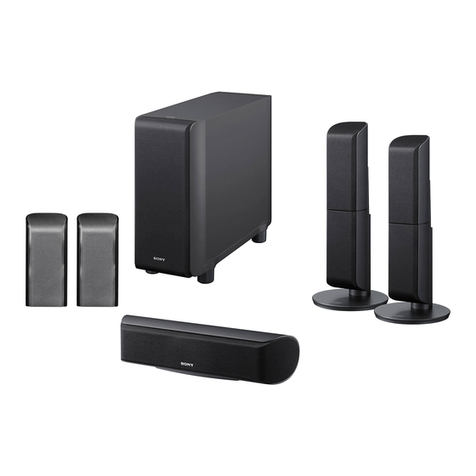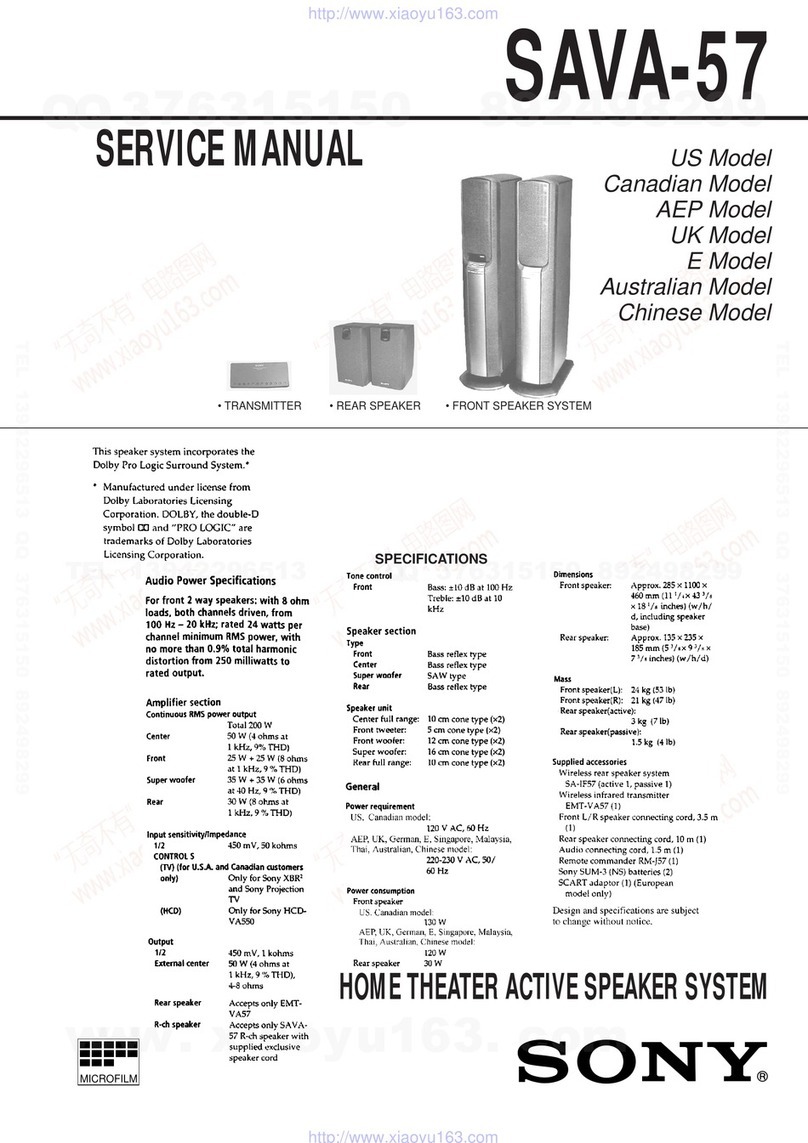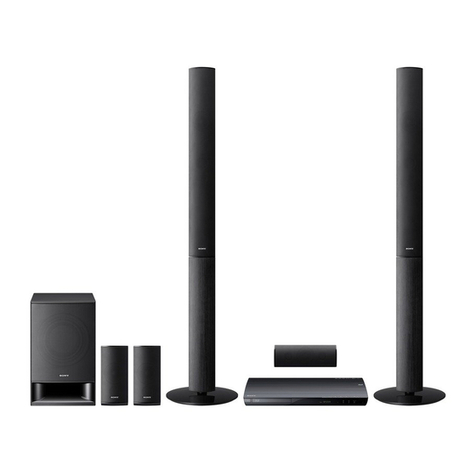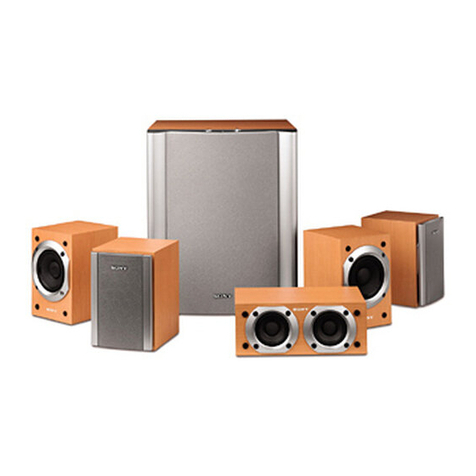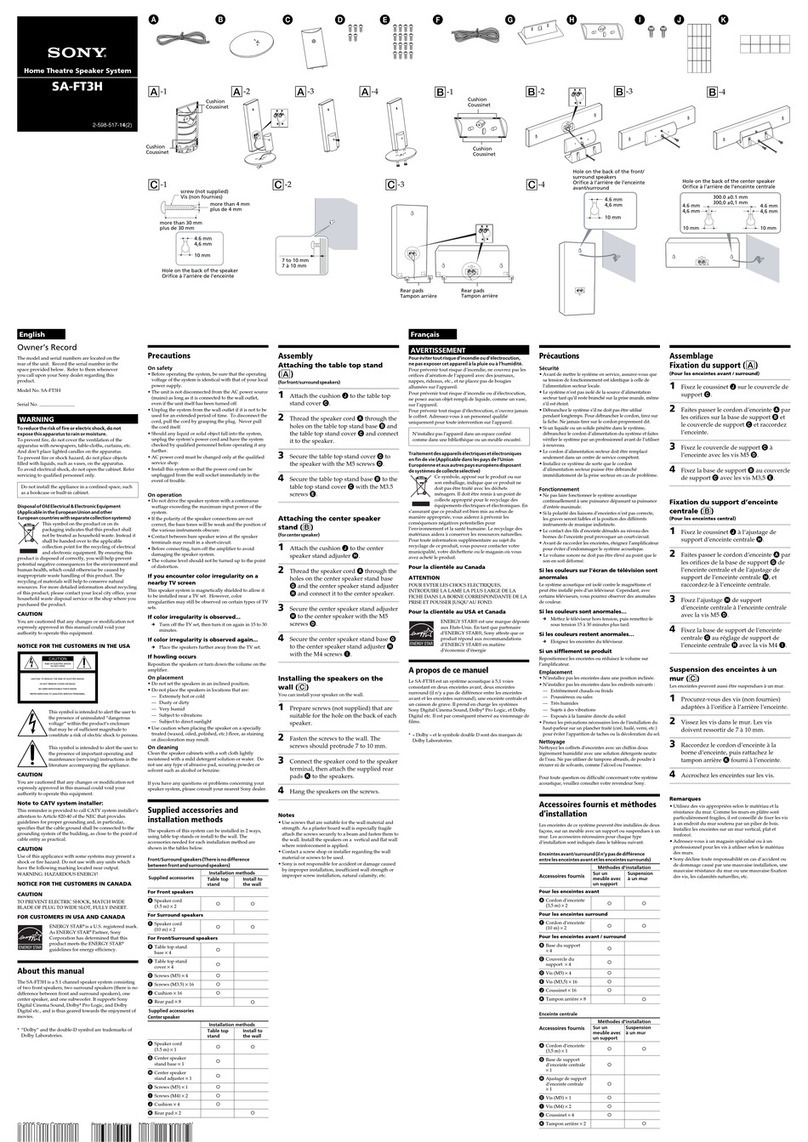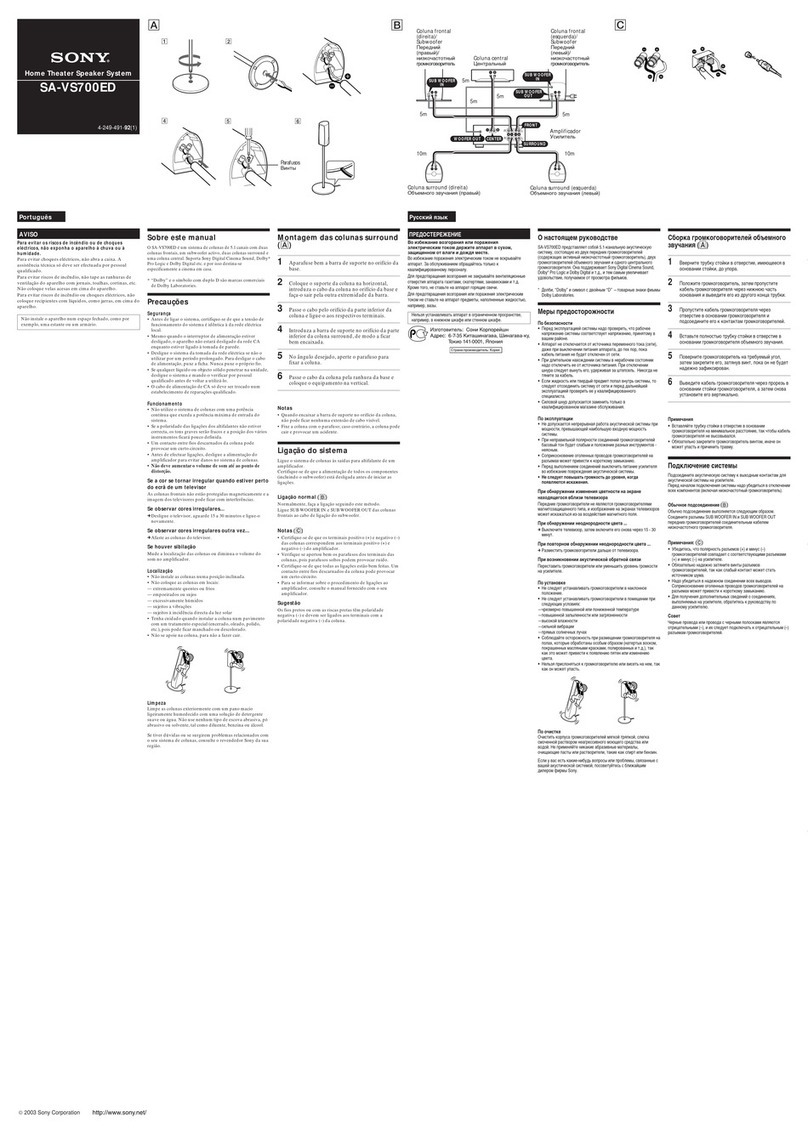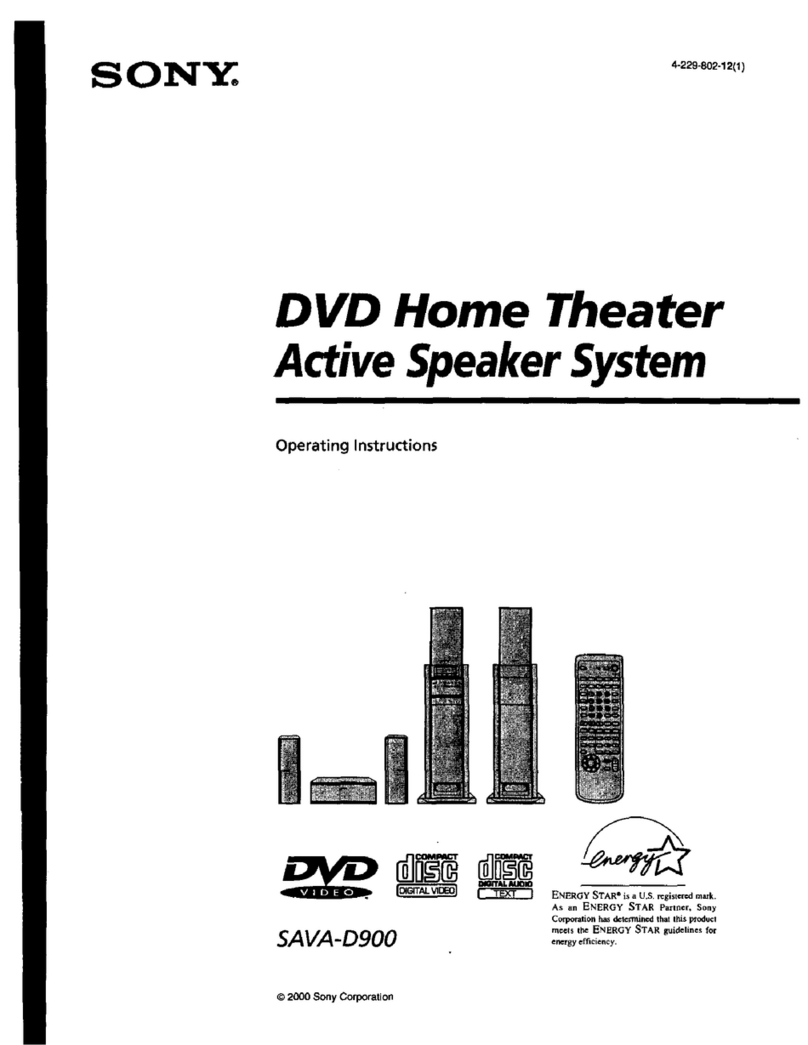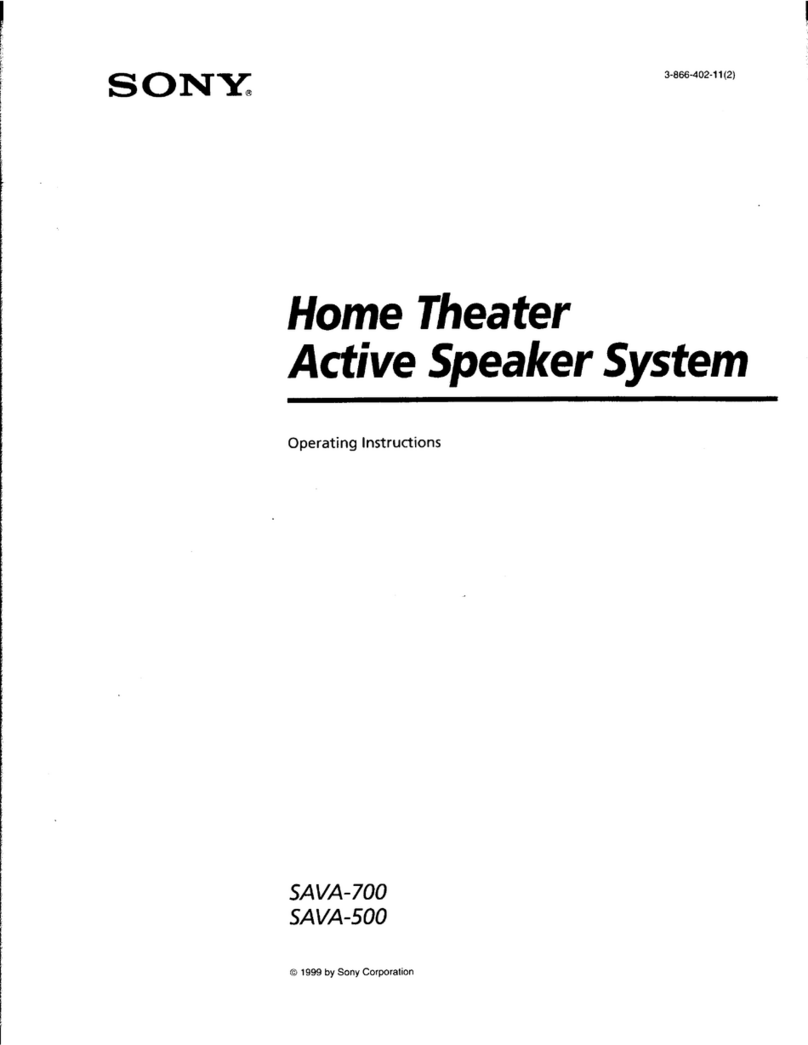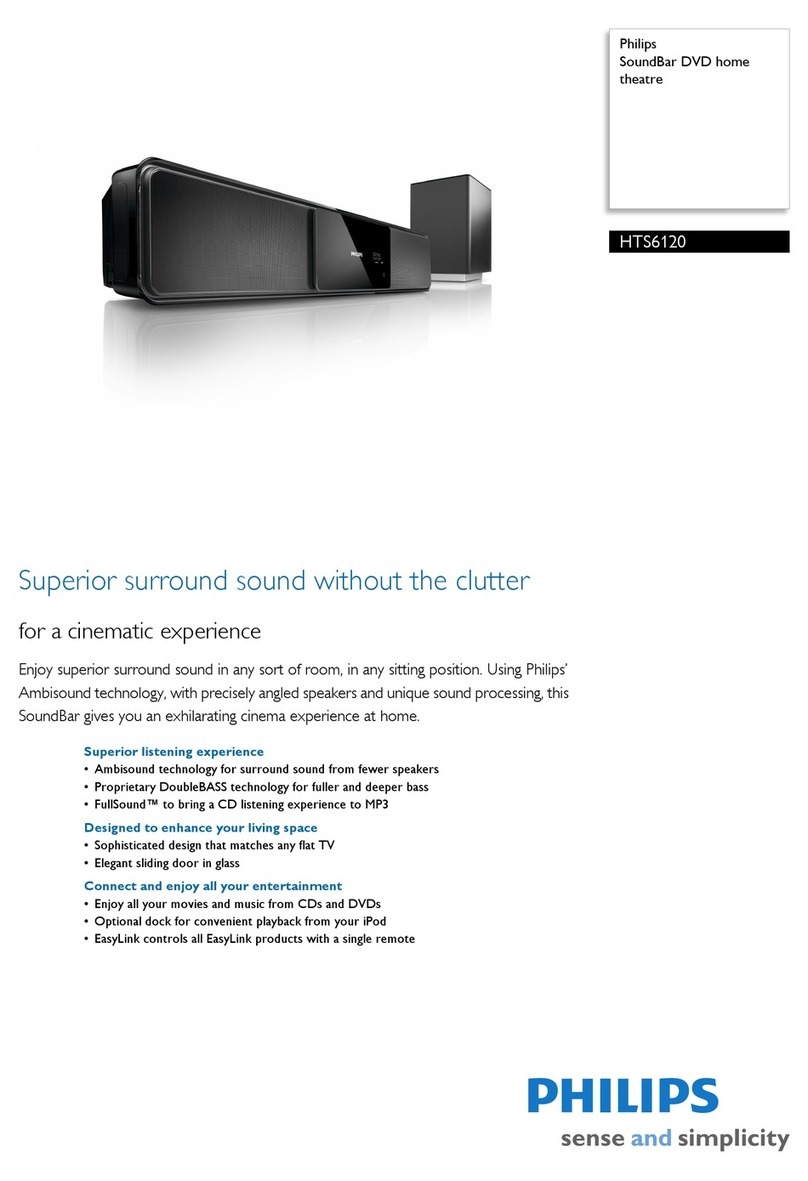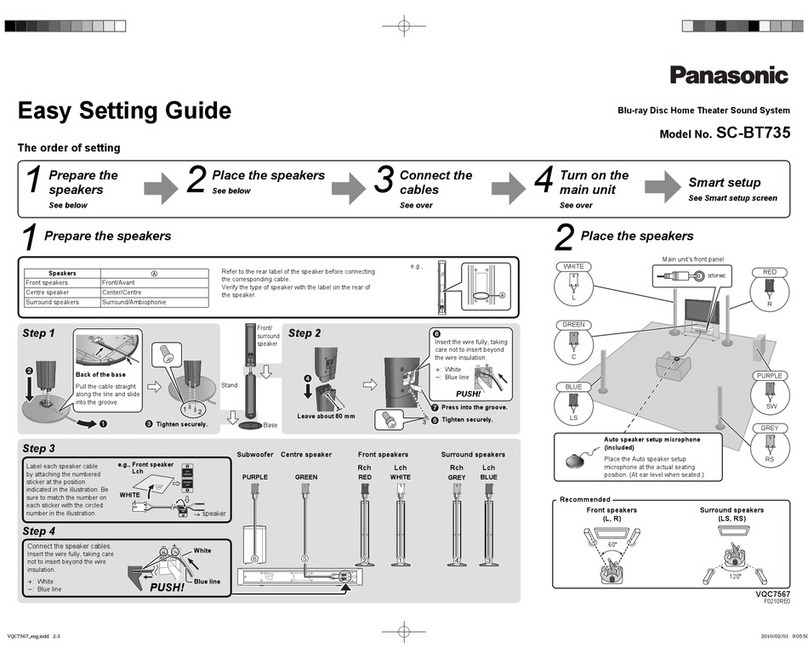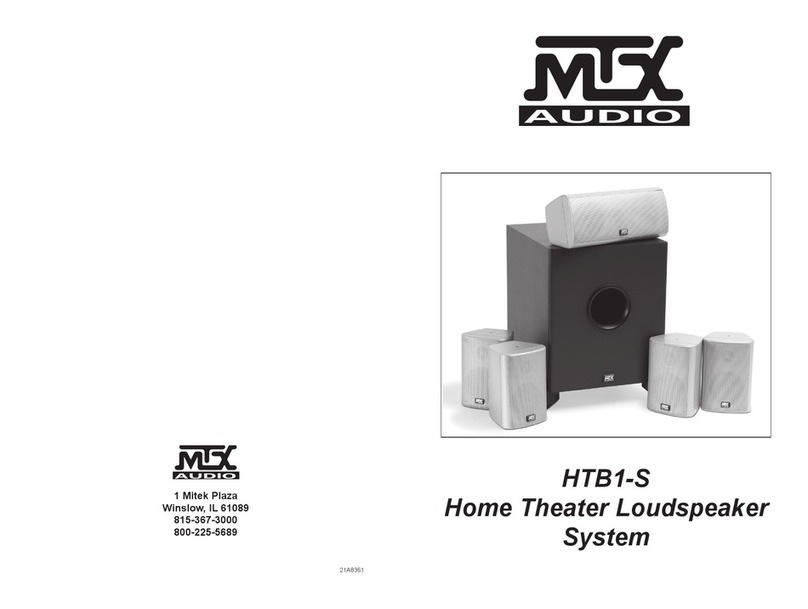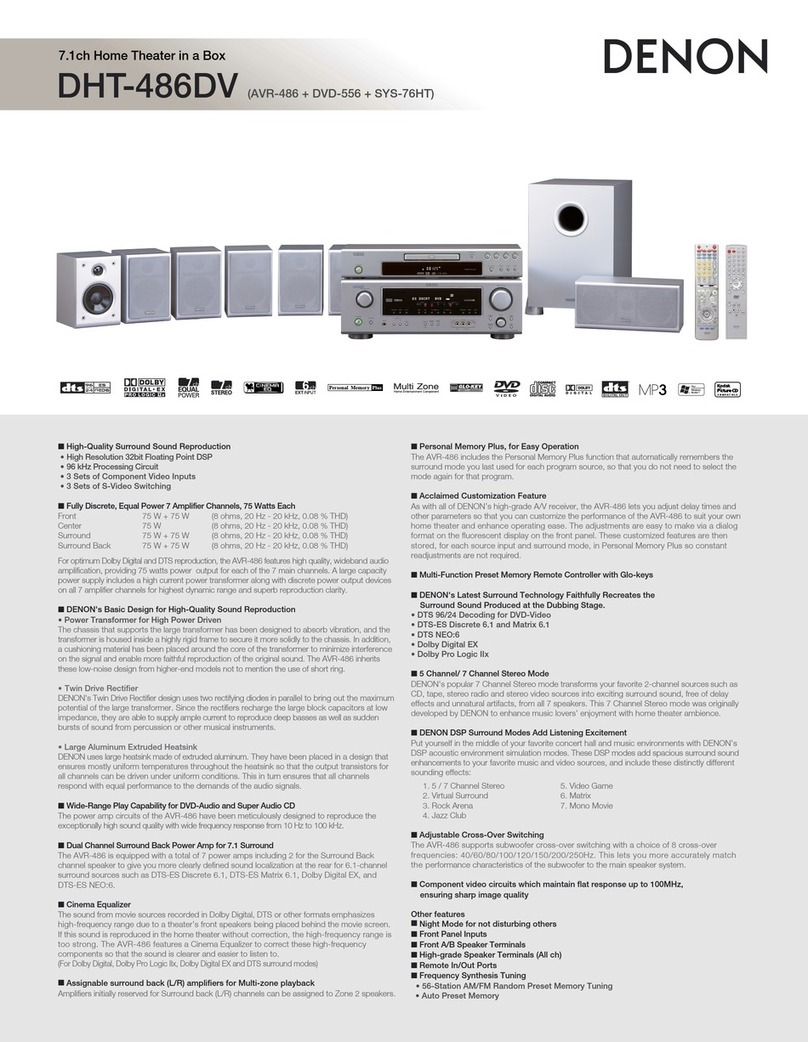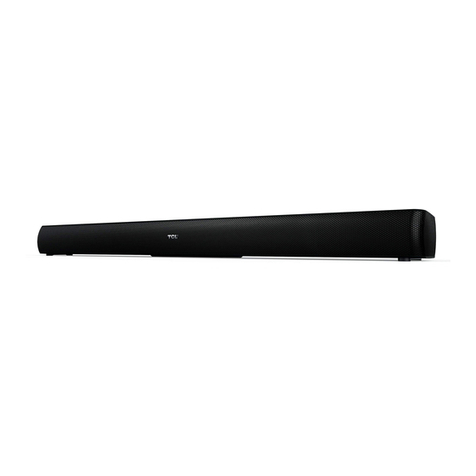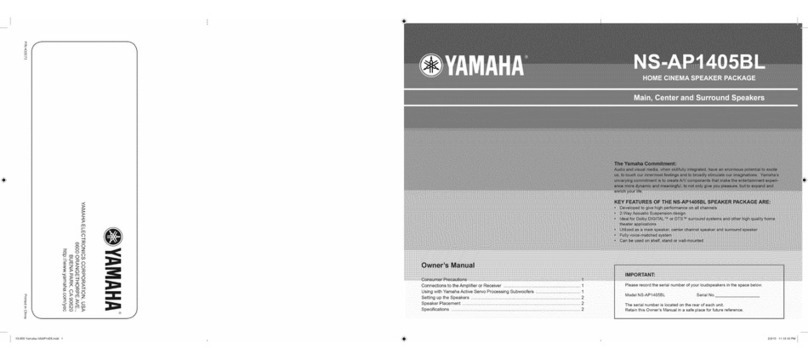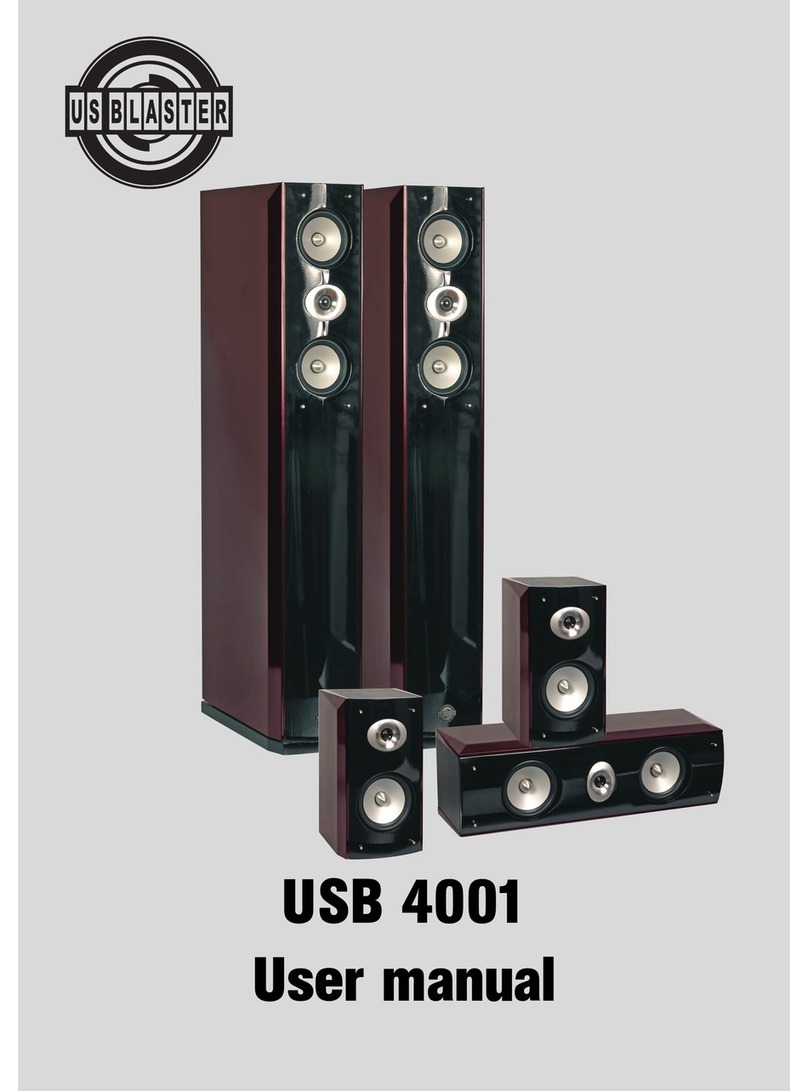6GB
Getting Started
Unpacking
Check that you received the following items with your
speaker system:
• Front L/R speaker connecting cord, 3.5 m (1)
• Rear speaker SS–SR151 (2)
• Rear speaker connecting cord, 10 m (2)
• Audio connecting cord, 1.5 m (1)
• Remote commander (remote) RM–J10 (1)
• Sony SUM–3 (NS) batteries (2)
• Anti-vibration pads (8)
Inserting batteries into the remote
Insert two size AA (R6) batteries with the + and – on
the battery compartment. When using the remote,
point it at the remote sensor gon the left front
speaker.
When to replace batteries
Under normal use, the batteries should last for about 6
months. When the remote no longer operates the
speakers, replace both batteries with new ones.
Notes
• Do not leave the remote in an extremely hot or humid
place.
• Do not use a new battery with an old one.
• Do not expose the remote sensor to direct sunlight or
lighting apparatuses. Doing so may cause a malfunction.
• If you don’t use the remote for an extended period of time,
remove the batteries to avoid possible damage from
battery leakage and corrosion.
Precautions
On safety
• Should any solid object or liquid fall into the cabinet,
unplug the speaker system and have it checked by
qualified personnel before operating it any further.
On power sources
• Before operating the speakers, check that the operating
voltage is identical with your local power supply. The
operating voltage is indicated on the nameplate on the
rear of the speakers.
• The speakers are not disconnected from the AC power
source as long as they are connected to the wall outlet,
even if the speakers themselves have been turned off.
• If you are not going to use the speakers for a long time, be
sure to disconnect the speakers from the wall outlet. To
disconnect the Mains lead, grasp the plug itself; never
pull the cord.
• One blade of the plug is wider than the other for the
purpose of safety and will fit into the wall outlet only one
way. If you are unable to insert the plug fully into the
outlet, contact your dealer.
• AC power cord must be changed only at the qualified
service shop.
On placement
• Do not place the speakers near heat sources, or in a place
subject to direct sunlight, excessive dust or mechanical
shock.
• Good ventilation is essential to prevent internal heat
buildup. Place the speakers in a location with adequate air
circulation, and in a way that does not block the rear
ventilation holes.
On cleaning
• Clean the cabinet, panel and controls with a soft cloth
slightly moistened with a mild detergent solution. Do not
use any type of abrasive pad, scouring powder or solvent
such as alcohol or benzine.
If you have any question or problem concerning your
receiver, please consult your nearest Sony dealer.
